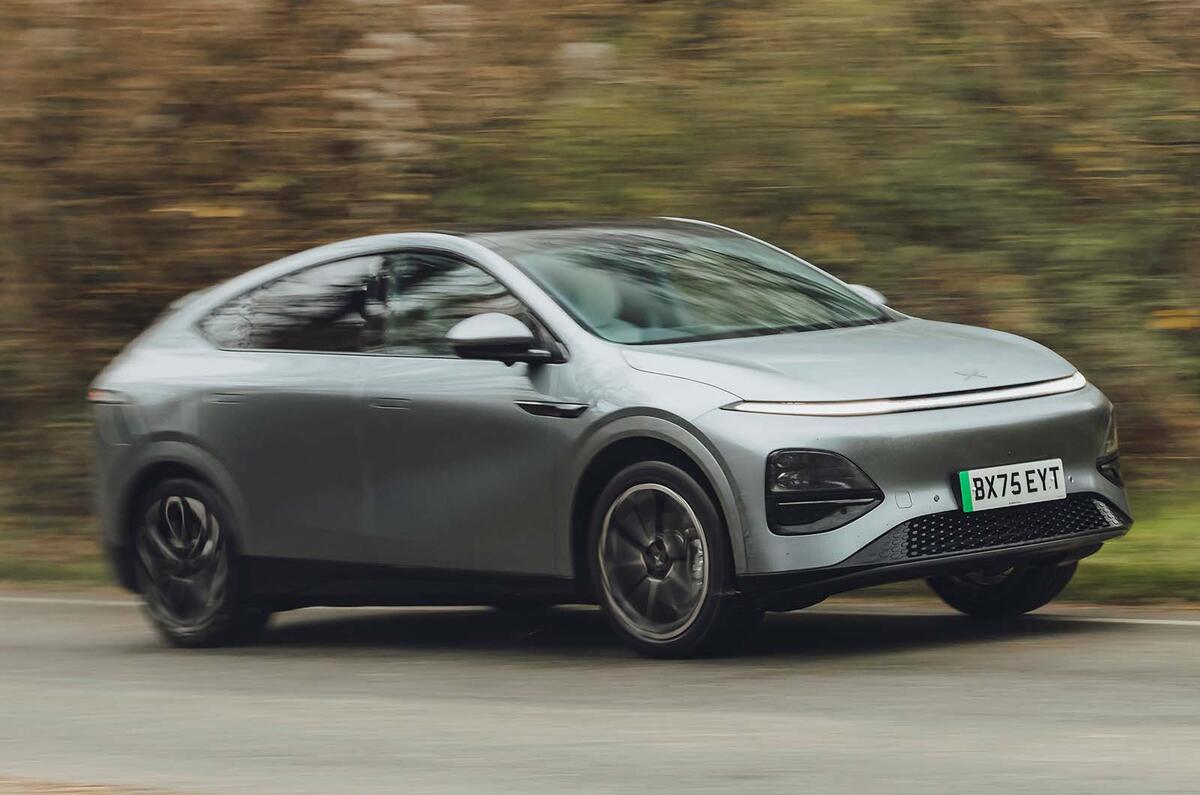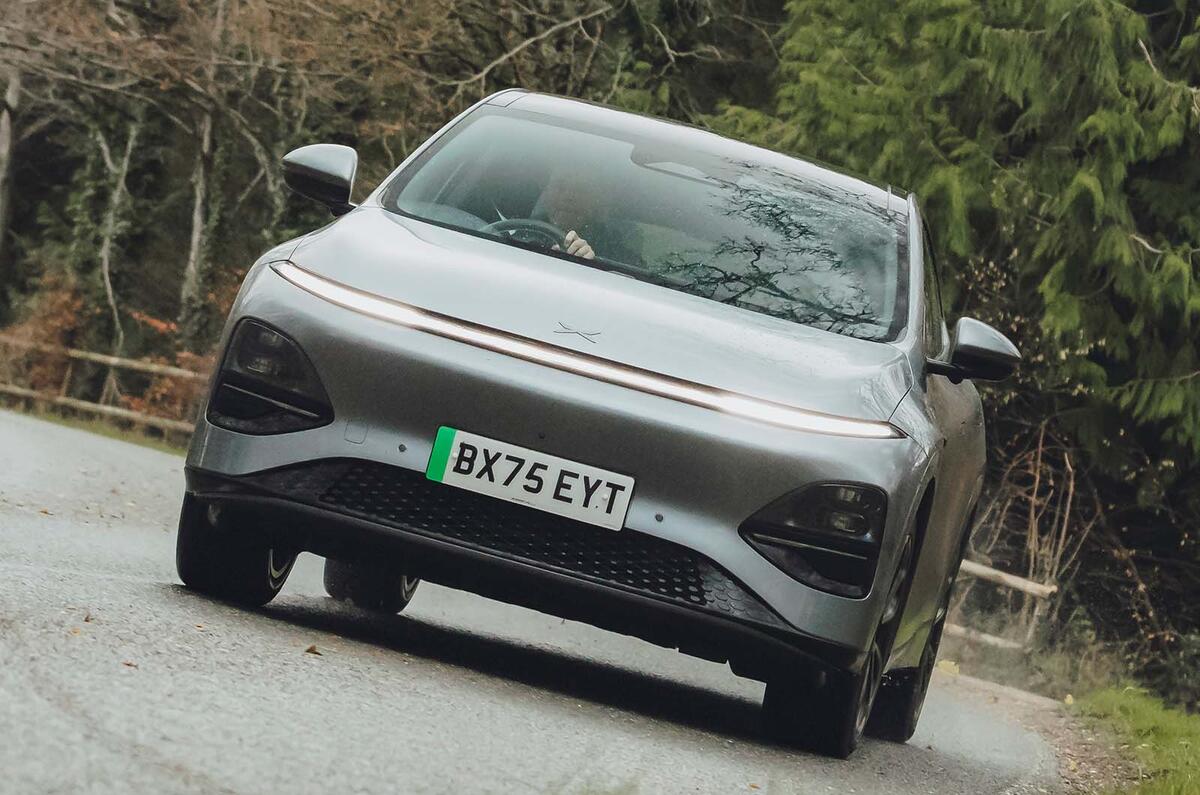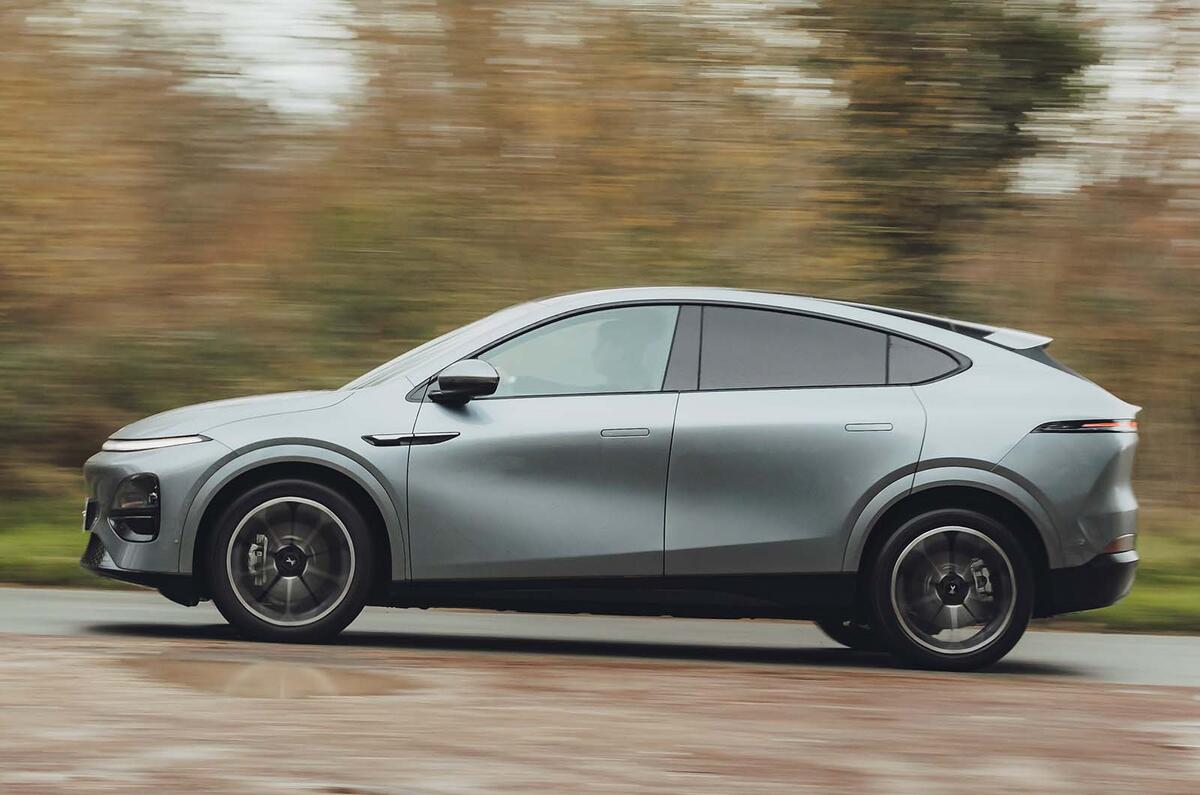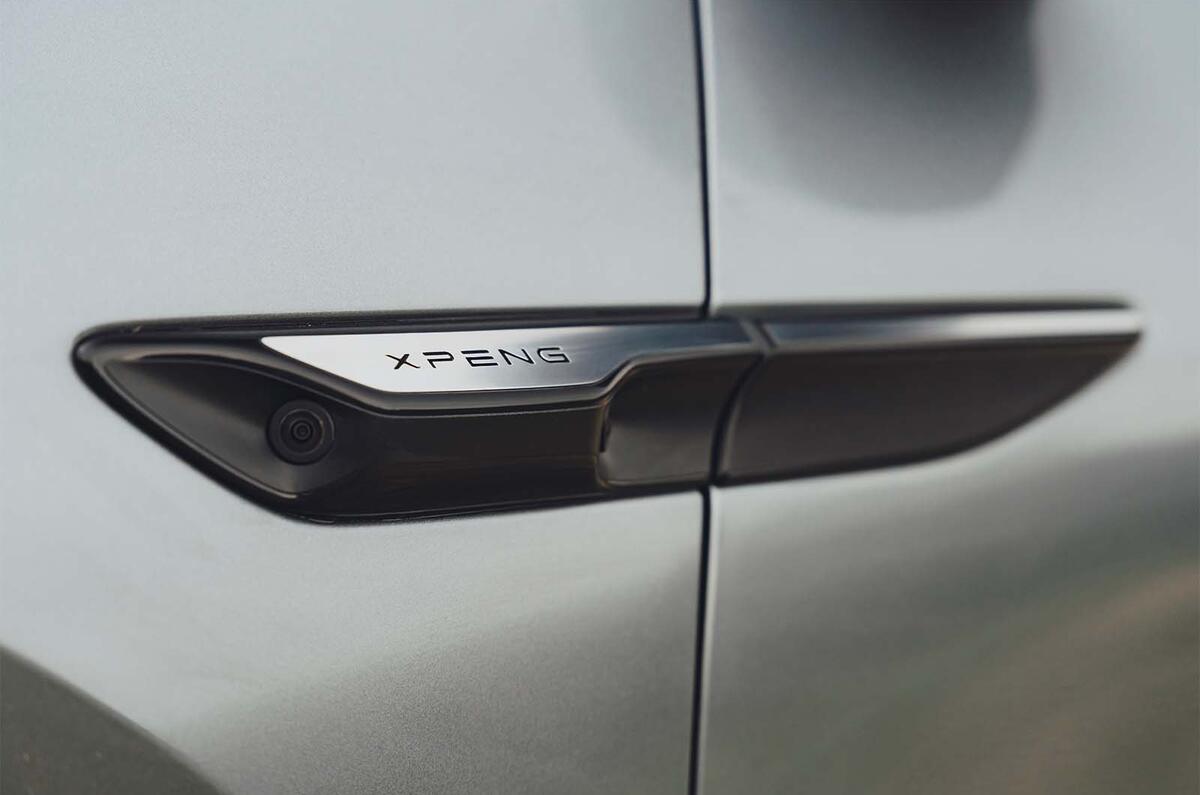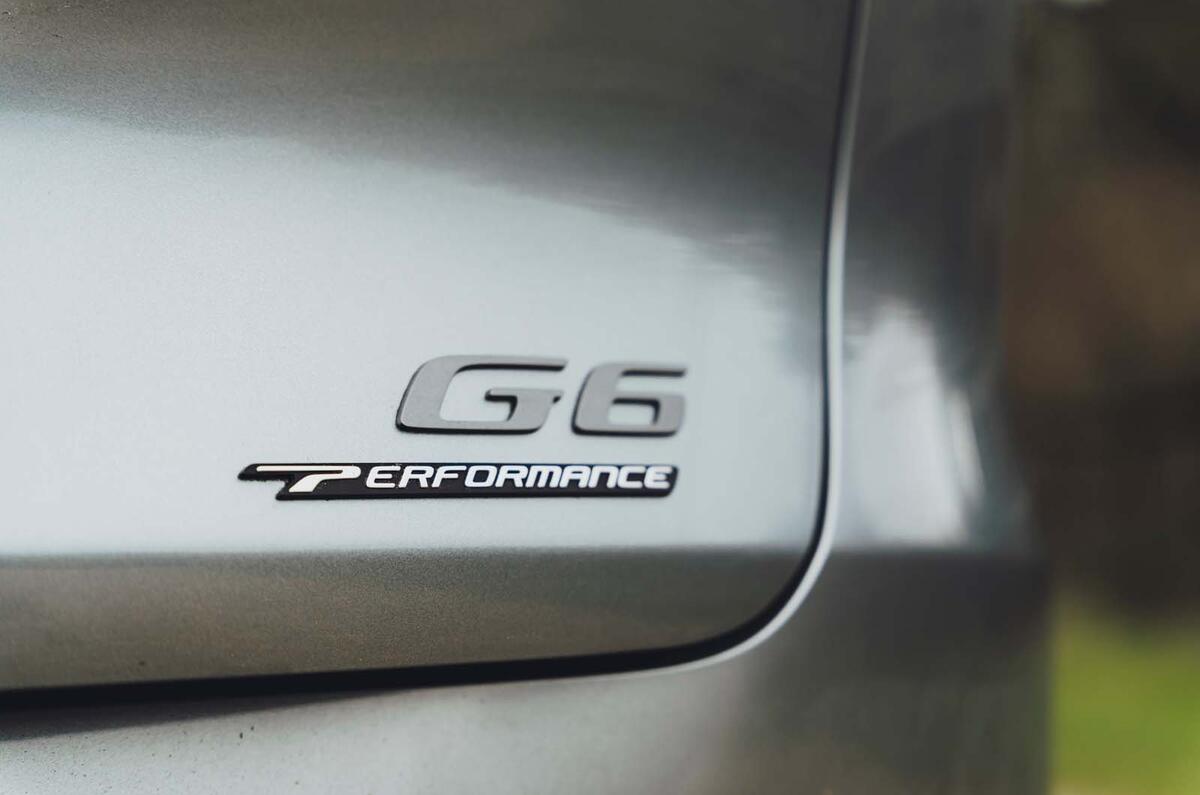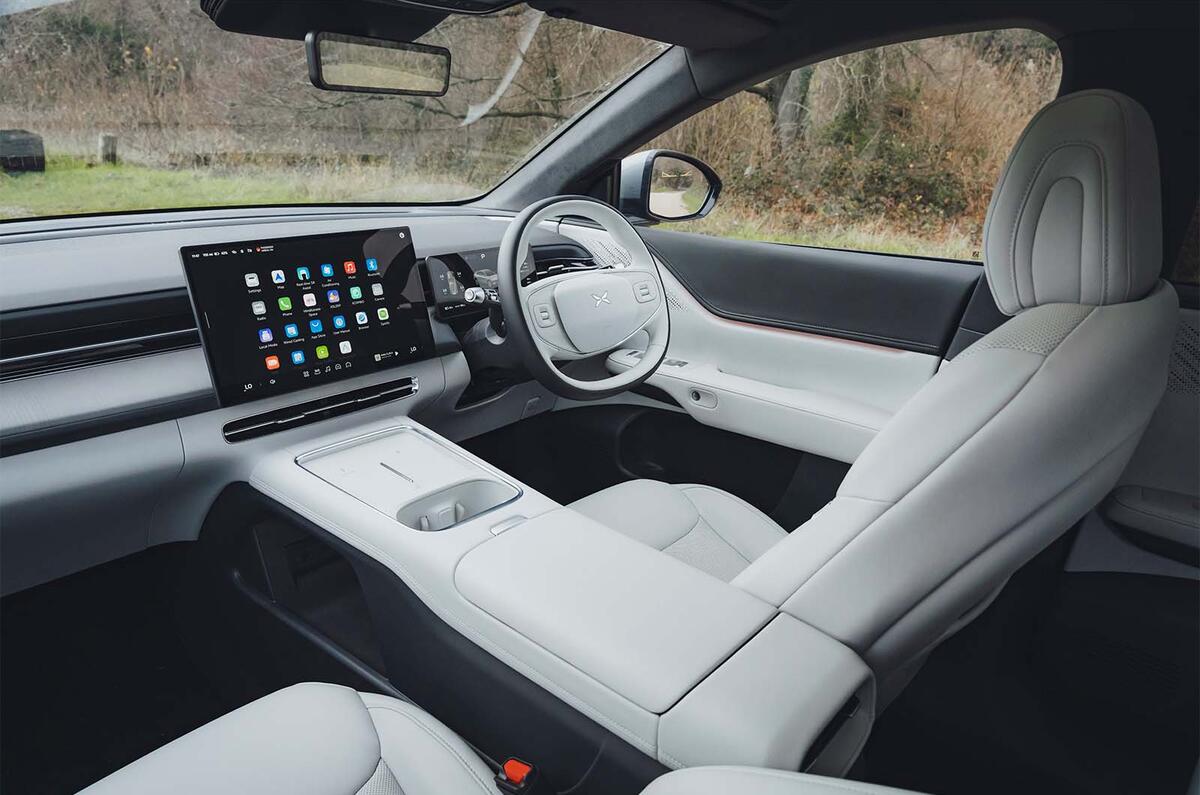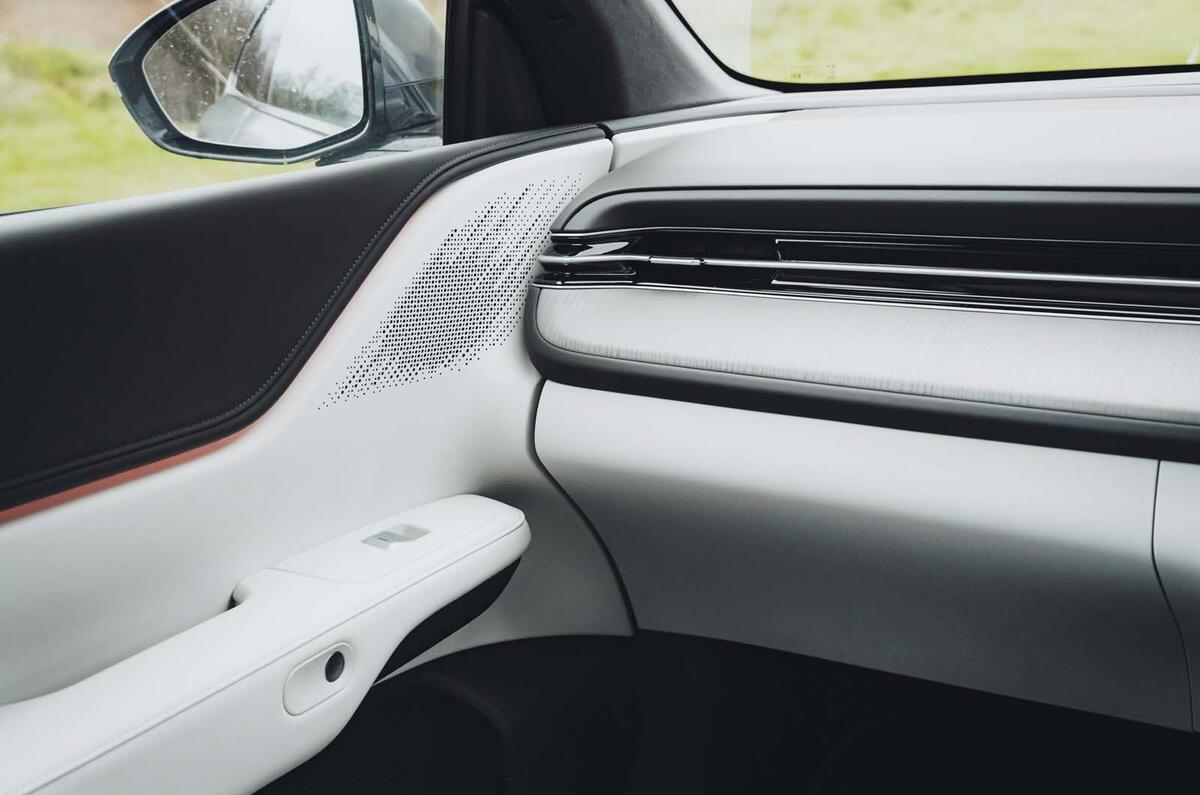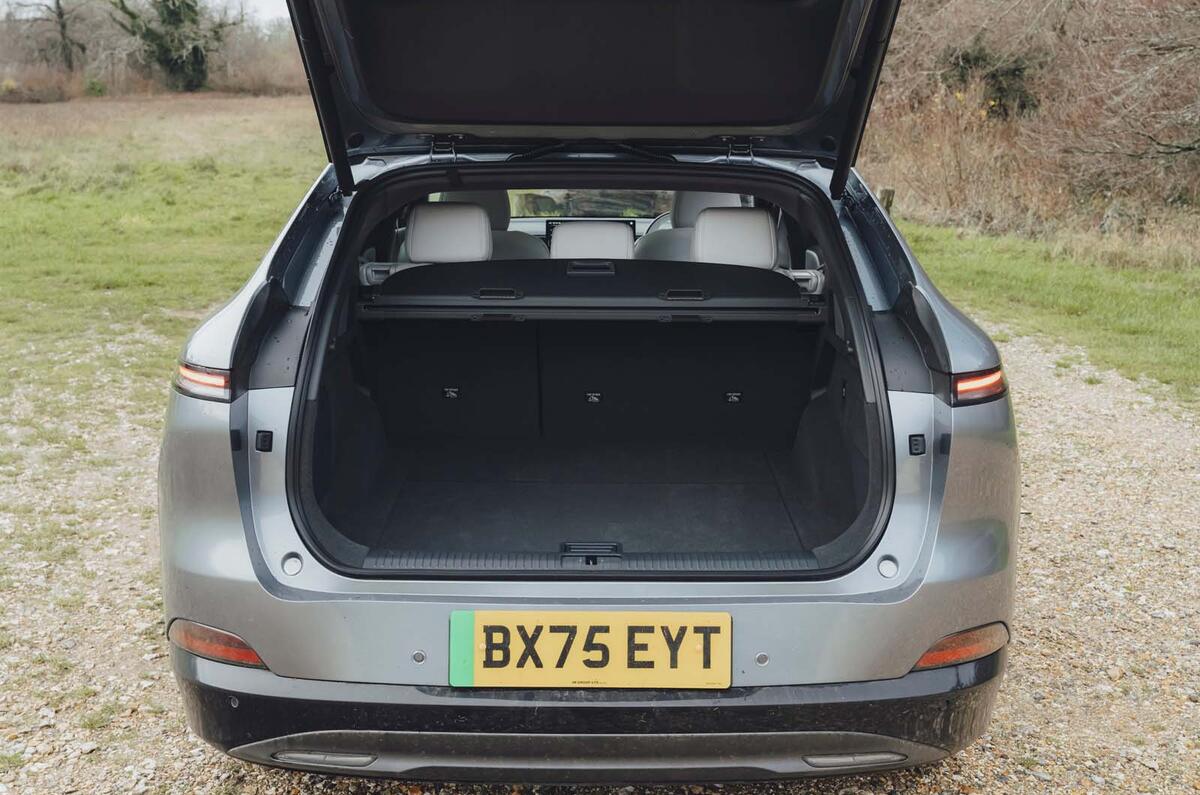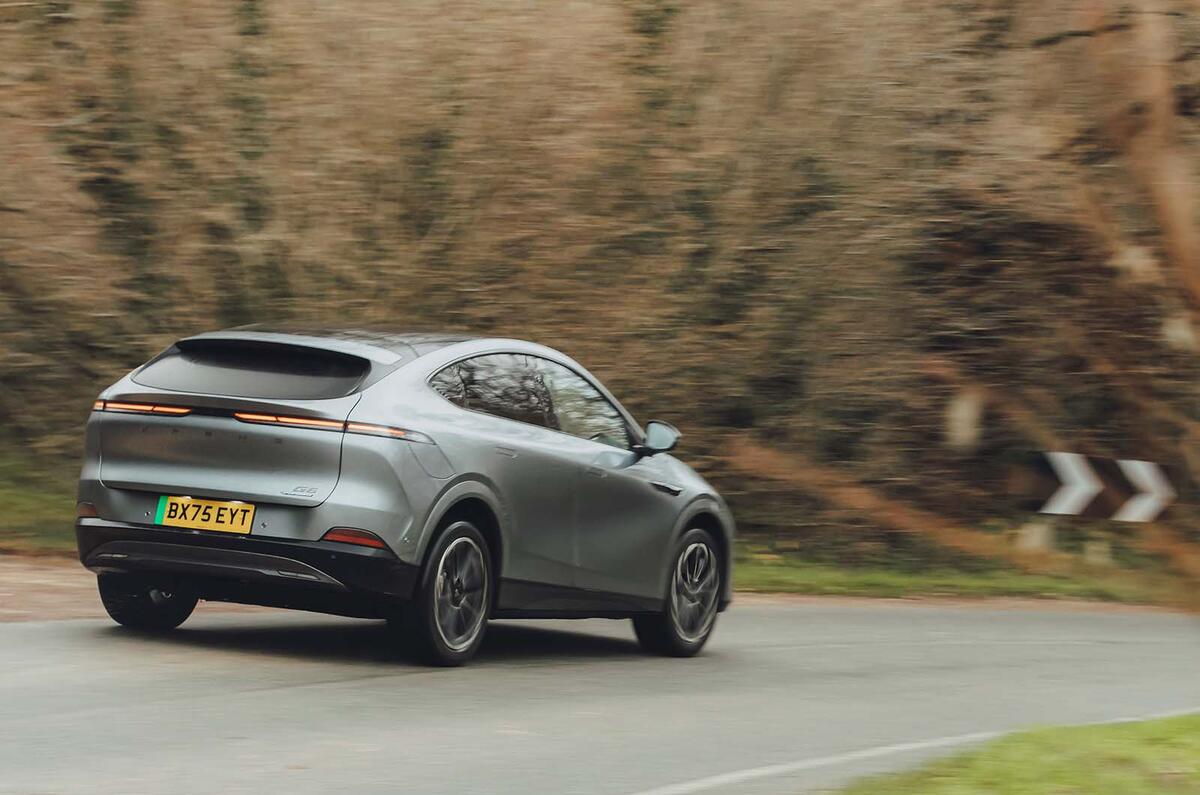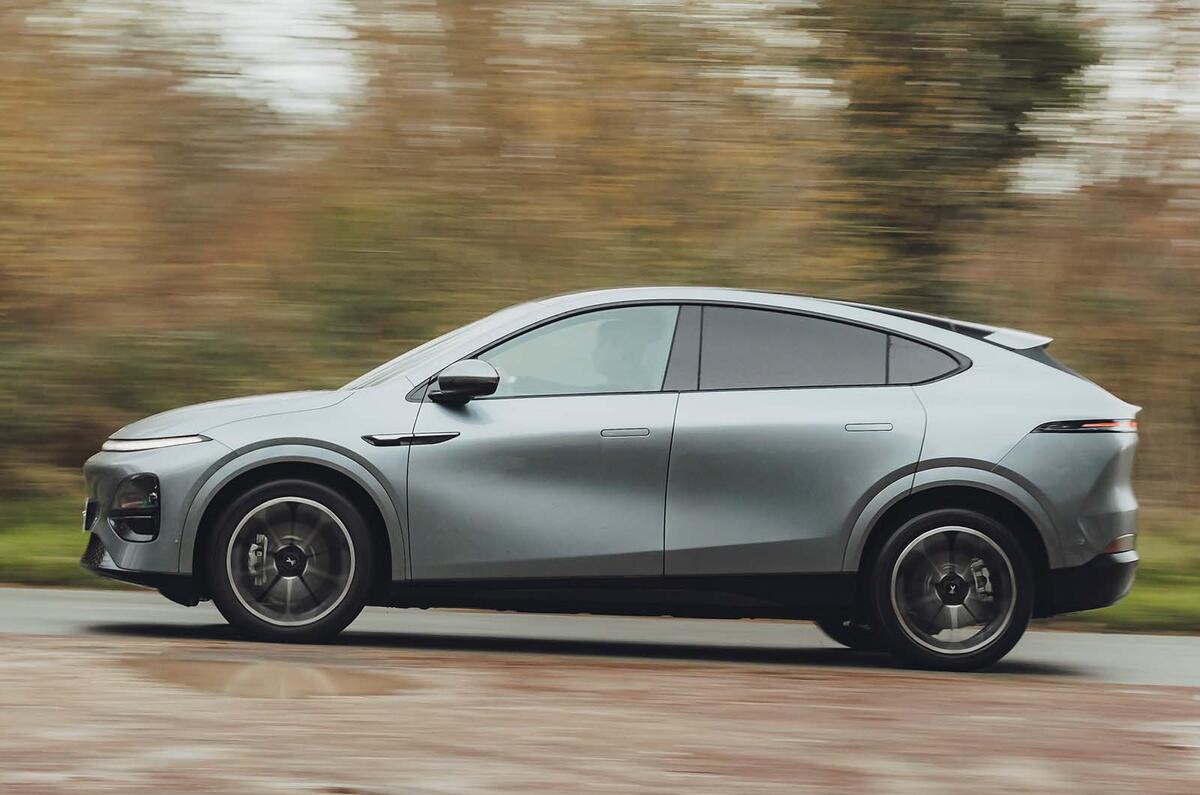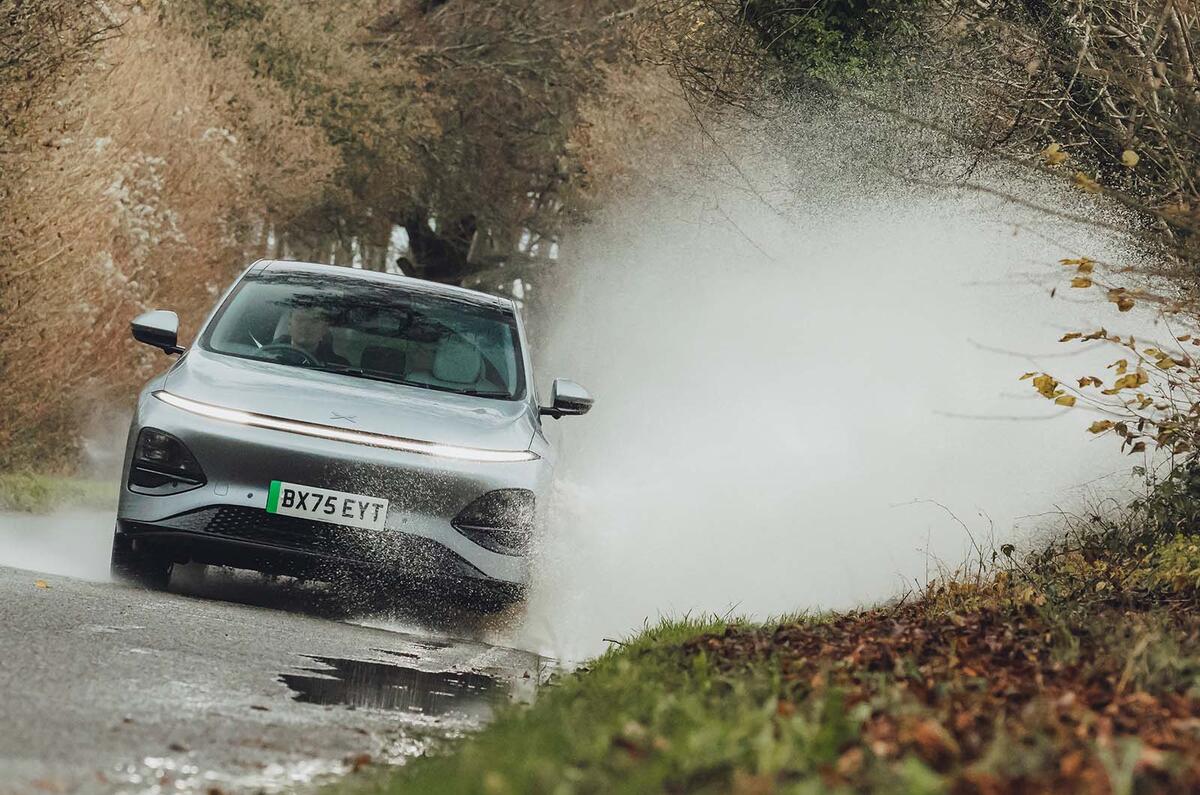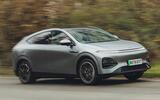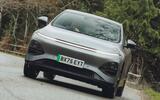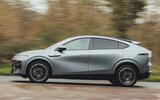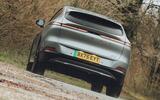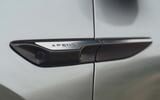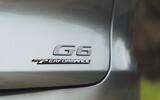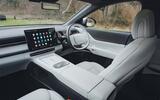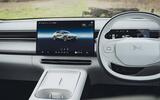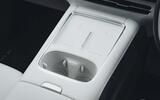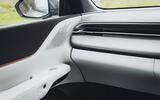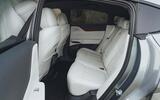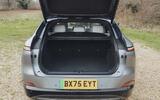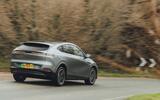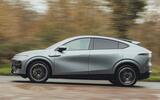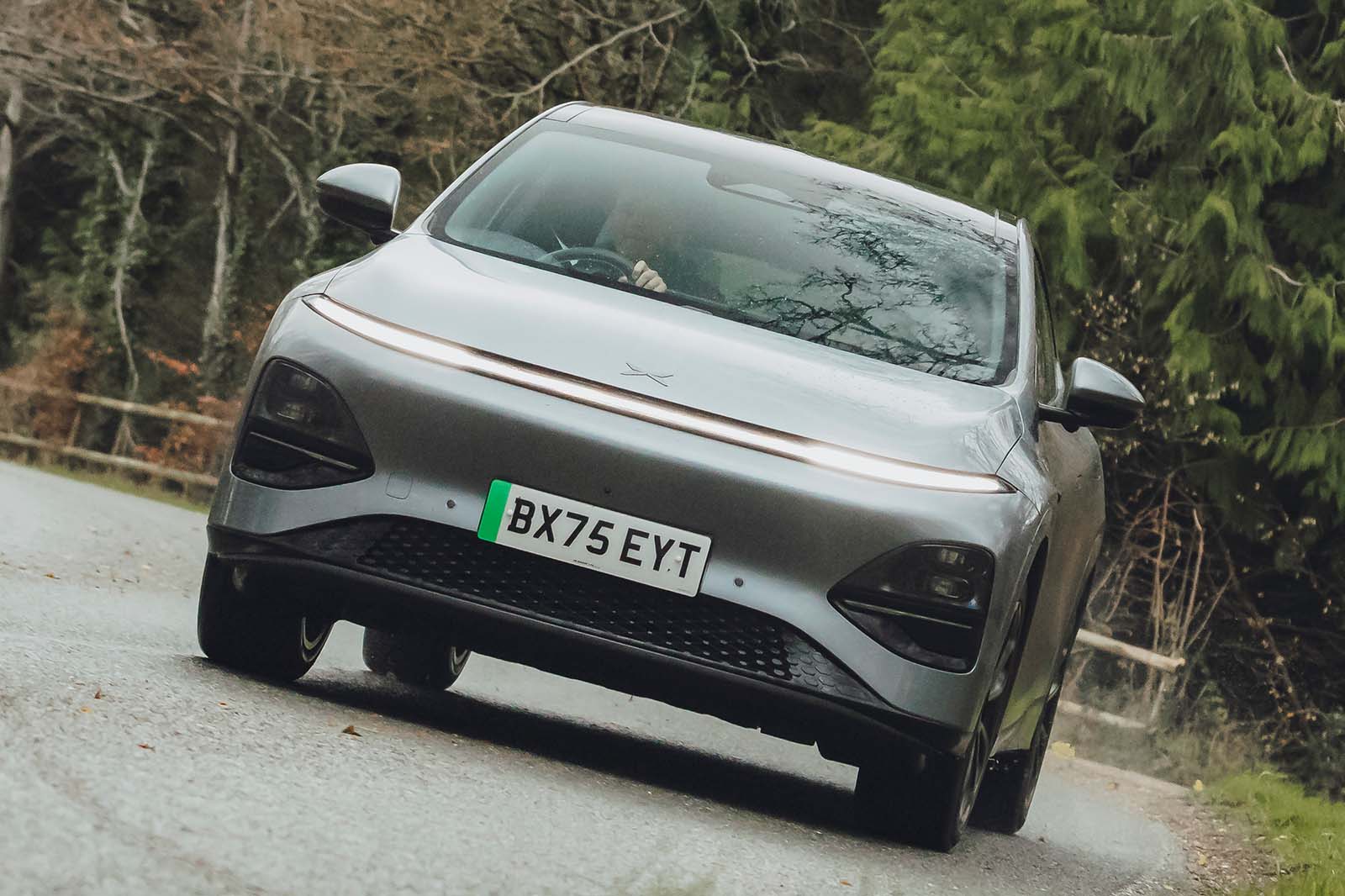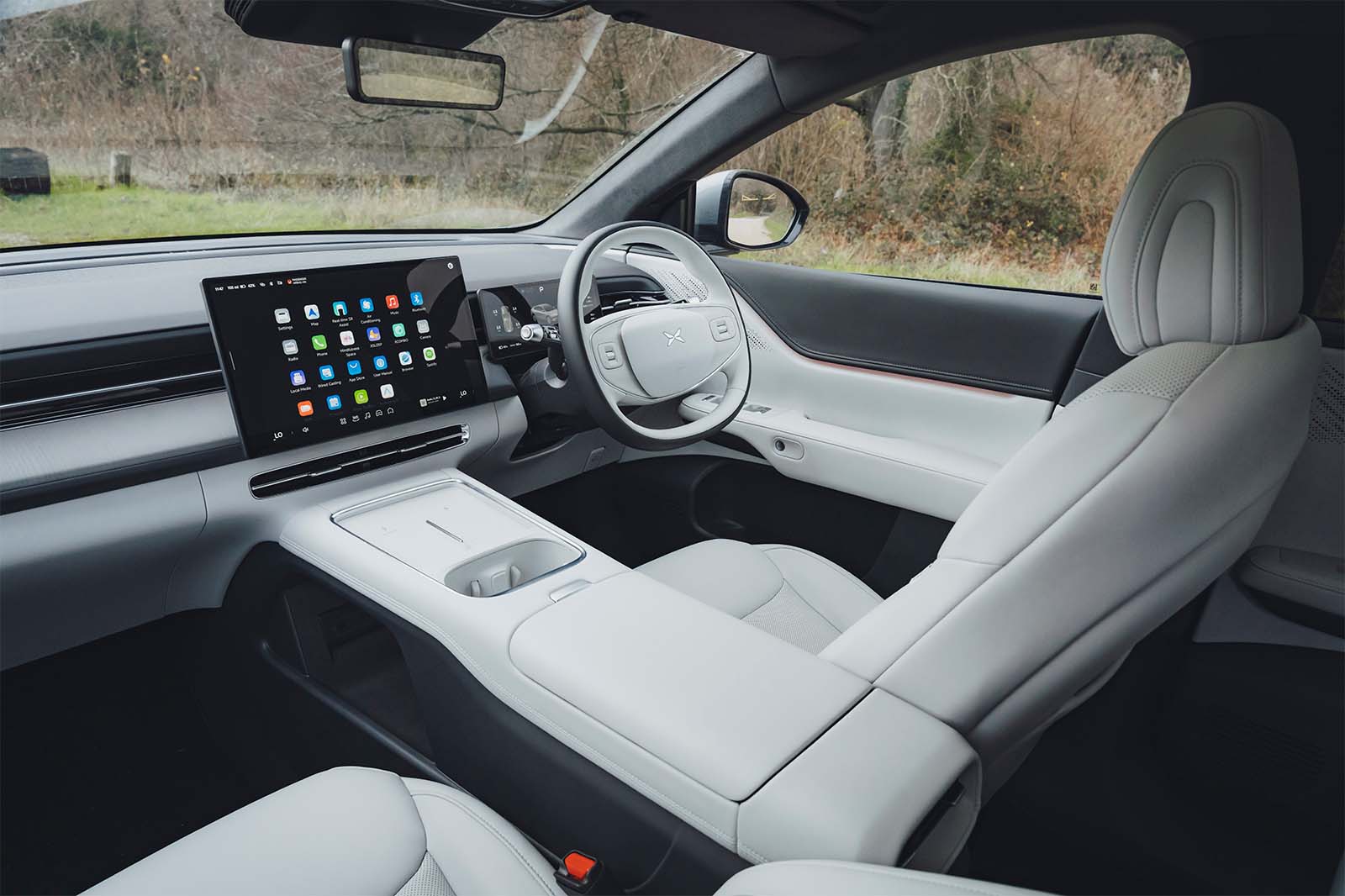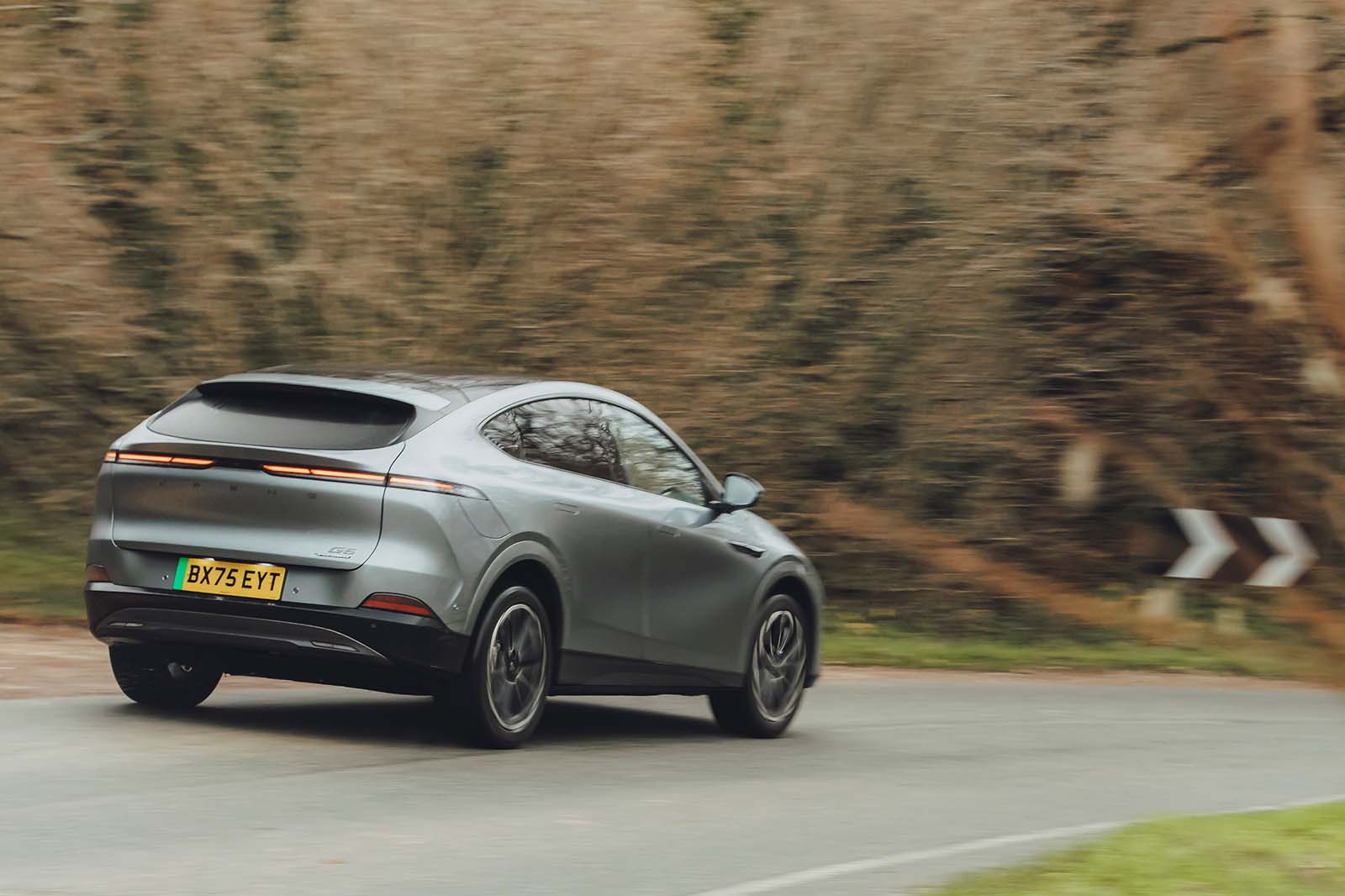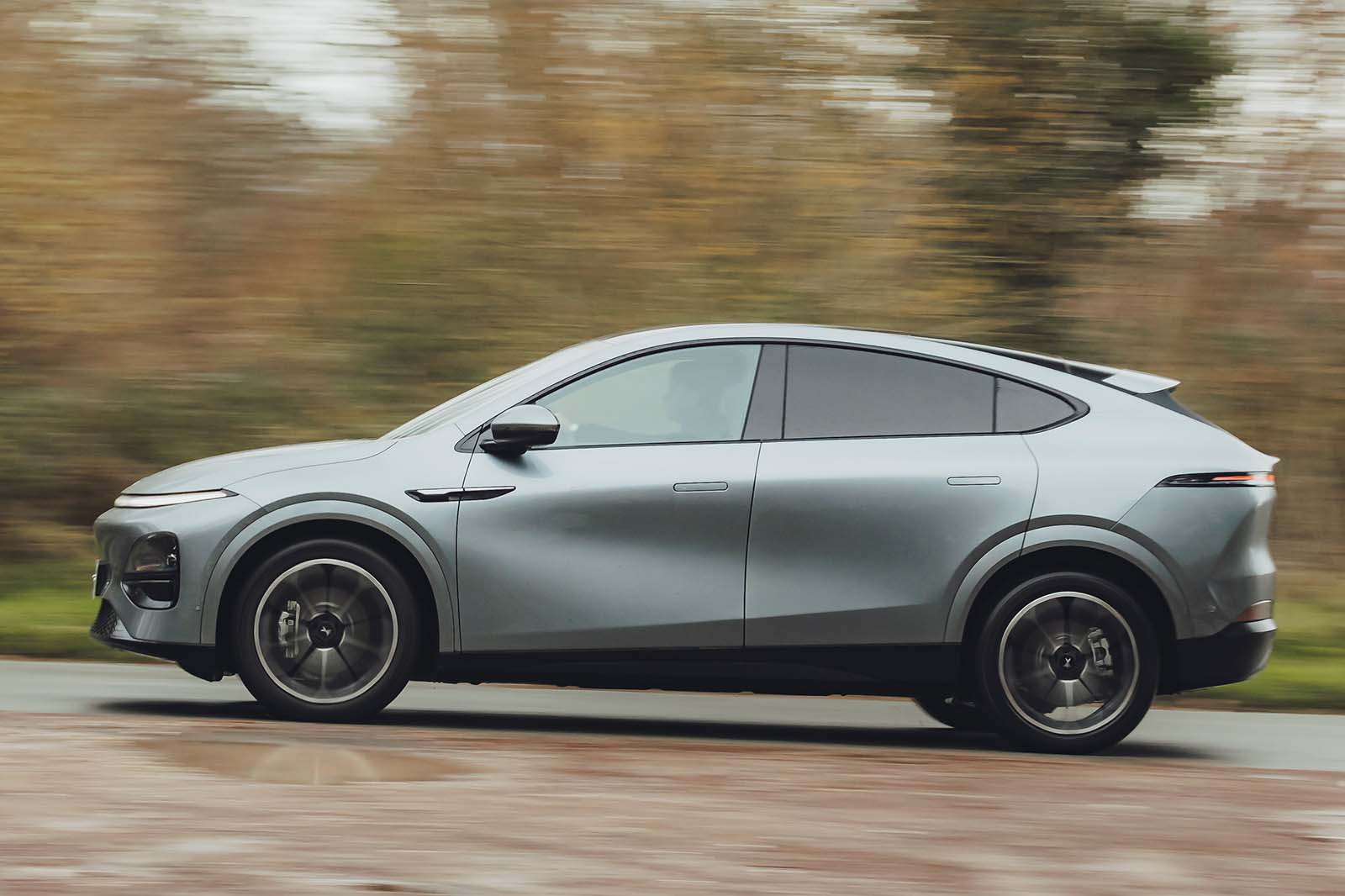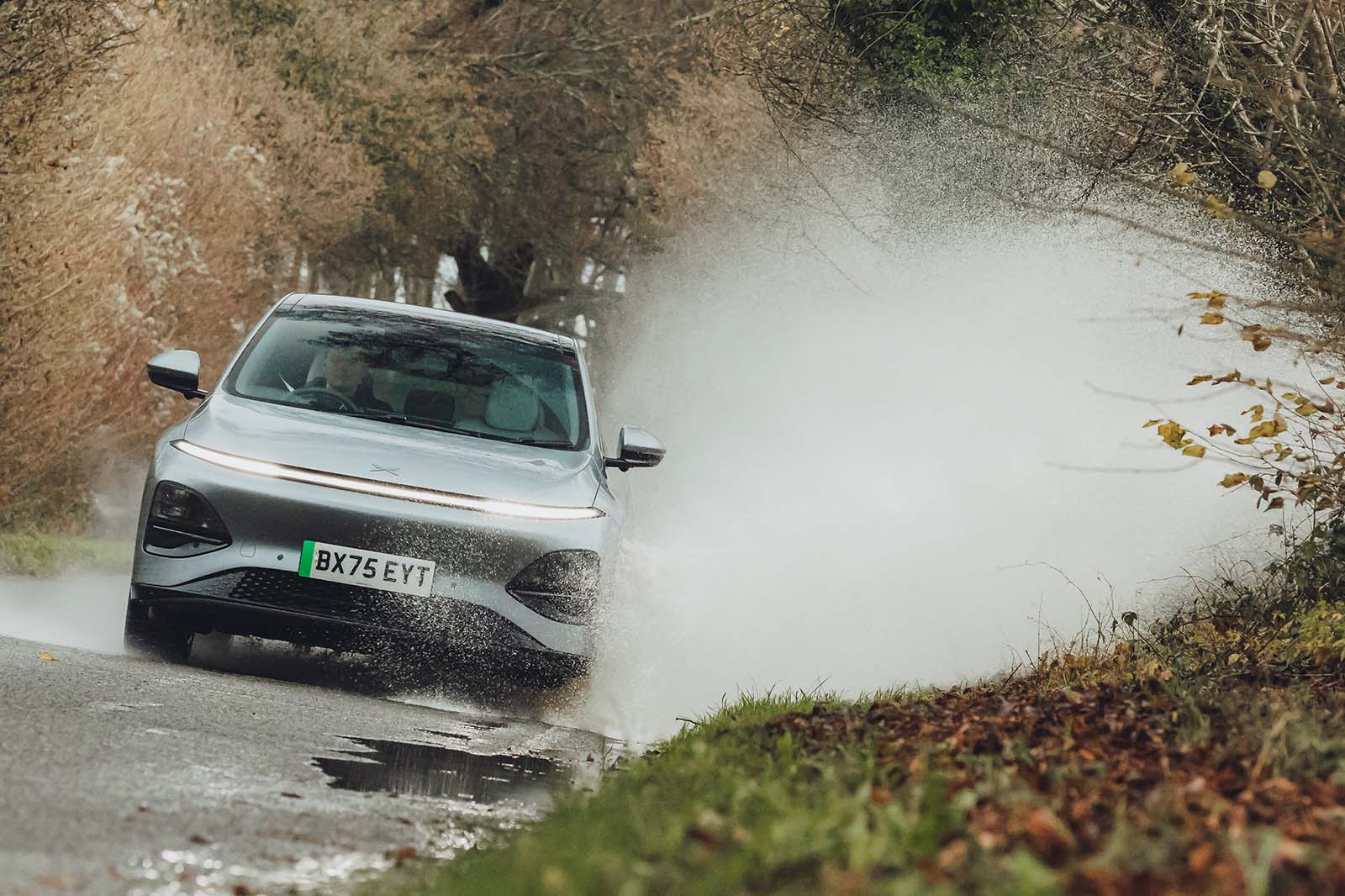The G6 feels a bit bathtub-like to sit in, because the plunging bonnet and bodysides are hidden from view from the driver’s seat behind quite a high beltline and scuttle. This, combined with the effect of that rakish roofline at the rear, makes for quite an enveloping ambience, which it builds on to modestly luxurious effect in at least one respect.
This is quite a big car for the price – around 200mm longer than the Peugeot e-3008 and more than 100mm longer than the Skoda Enyaq. Most generous is second-row passenger space: even taller adults will find room to stretch out on the back seats, which don’t seem to suffer from the ‘high floor syndrome’ that affects so many electric cars. They also recline quite a long way.
Digital technology aside, though, the G6’s interior doesn’t feel particularly premium in feel, and yet it neither is it hard or diminished by the use of cheap materials.
Perceived quality throughout the cabin is good: interrogate key touch points on the doors, dash and centre console and you’ll be pleasantly surprised. Materially it feels plusher than an MG and on par with a BYD.
Up front, there’s a slightly anonymous look to the dashboard and primary controls, but that’s mostly because there are so few features to look at here – and what is there isn’t very originally themed.
The Standard Range car’s use of stain chrome switchgear and decorative trim against the charcoal grey of mouldings and cloth puts you in mind of a mid-level Mercedes business saloon, while the layout of a dominant central touchscreen, and so little elsewhere, is clearly from the Tesla playbook.
That being said, the brighter-coloured Nappa leather seats and imitation wood trim across the dashboard of the AWD Performance model is far less austere and agreeably appointed.
Unlike in a Tesla, the G6 does have an instrument display, but no head-up display, and it does have a ‘column shifter’ drive selector and an indicator stalk. The ‘thumb’ button consoles on the steering wheel spokes, meanwhile, double up to change door mirror position and adjust the motorised steering column, in a similar way to a Tesla, once the right touchscreen menu is selected. It’s not the most seamless process and makes adjusting certain functions far harder when driving.
There’s quite a bit of cabin storage in the front row, between a deep armrest cubby and the space below the floating centre console. However, while the boot is advertised at a voluminous-sounding 571 litres, its outright space is clearly shallower than in some squarer-bodied SUV rivals, and it might not be suited to carrying the very bulkiest of loads.
Multimedia
The G6’s 15.6in landscape-oriented touchscreen has very little back-up from permanent physical controls. As a result, like so many infotainment screens we’ve criticised, it must provide heater and ventilation controls, audio system controls, trip computer information and more – and all at a fairly distantly stretched arm’s length from the driver.
Admittedly, the heating, cooling and fan speed can be adjusted by the thumb buttons – unless the cruise control is selected. If that’s in use, you need to use the touchscreen to control the HVAC.
It’s generally well-configured, but there are a fair few menus to hop between. That the lower shortcut nav bar makes the icons on it a little too small for easy at-a-glance identification is a more minor annoyance.
The system includes wireless smartphone mirroring for Apple CarPlay and Android Auto as standard. The twin, air-conditioning-cooled, 50W wireless smartphone charging pads are really great, too, working perfectly to keep your device topped up.





